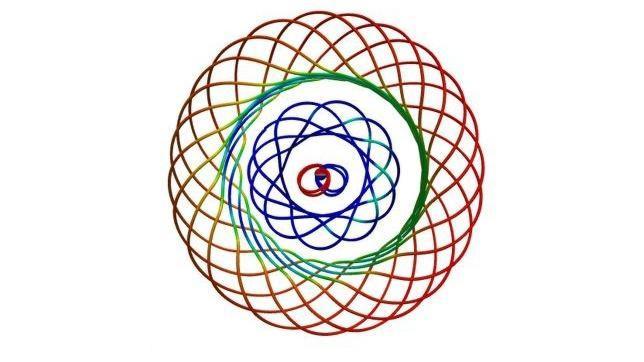Es un cuerpo espacial con una gravedad enorme que atrae
todo a su alrededor es tan fuerte que ni la luz puede escapar de este, su masa está
concentrada en un punto en donde su densidad es cuasi infinita, entre más lejos
se esté de uno menos debe ser la velocidad, todo lo que es atrapado por el
borde es absorbida hasta el centro del hoyo negro en sí, existen diferentes
tipos que dependen específicamente de la masa del mismo.
Este se forma cuando algo alcanza una densidad critica y
se convierte en un punto muy pequeño, en el caso de las estrellas ocurre cuando
esta no produce energía en su núcleo, mientras la radiación la hincha, la
gravedad hace que colapse convirtiéndola en un ‘imán de objetos’, y es bien
sabido que cuando hacemos referencia a este tipo de accidentes naturales
interestelares, se nos ocurre una pregunta especifica y primordial ¿Qué pasa
cuando entramos en un agujero negro?
En si la respuesta a la pregunta seria relativa porque
todo iría ligado al tamaño y la fuerza del agujero, pero básicamente lo que haría
sería halar al objeto hasta su punto más externo, para luego atraerlo hacia el
centro estirándolo y consecuencialmente destruyéndolo, y aunque sería muy
interesante pensar que son como puertas a otros mundos, hasta el momento no se
conoce de ningún agujero que lo haga, aunque existe la teoría de los agujeros
de gusano, que según se dice permitiría la entrara a otros planetas y dimensiones,
pero no es muy coherente ya que si esto fuera posible el objeto en cuestión colapsaría
al entrar por el hoyo, además de que no se conoce la existencia de ningún agujero
de este tipo, y para poder crear uno artificialmente sería prácticamente imposible,
porque requeriría una masa inexistente.
Los agujero negros tienen diversos tamaños, el más grande
conocido hasta el momento es uno en la galaxia M87, en la constelación de
virgo, su masa se aproxima a tres millones de veces la del sol y su diámetro de
casi el doble mas grande que la órbita de Plutón, que según investigaciones está
catalogado como planeta enano.
Los agujeros descubiertos más cercanos a nuestro planeta están
lo bastante lejos como para no afectar en nada el planeta tierra, de hacho el más
cercano hasta ahora conocido estaría en el centro de la vía láctea a mucho años
luz, y para estar más seguros hay que responder otro importante postulado, SERA
O NO NUESTRO SOL UN AGUJERO NEGRO ALGUNA VEZ?, la respuesta es no, ya que este
tipo de estrella no son lo bastante masivas como para sufrir este tipo de
cambio, así que nosotros y nuestras futuras generaciones tendrán una preocupación
menos en cuanto al fin de la tierra, ya que lo que se supone que pasara es que
el sol perderá su capa externa quedando en su lugar una enana blanca, seguirá emitiendo
luz con la misma intensidad debido a su temperatura, pero con el tamaño de la
tierra, en resumen será mucho más pequeña de lo que es de hecho 100 veces menos,
además de que ya hay muchos agujeros negros, descubiertos y seguirán descubriendo
mas, la verdad creo que descubriremos muchas más cosas en algo tan intrigante y
poderoso como lo es el universo.
BLACK HOLES
This is formed when something reaches a critical density and becomes a very small, in the case of stars occurs when this does not produce energy in the core, while the swollen radiation, gravity causes it to collapse making it a "magnet object ', and is well known that when we refer to such natural features interstellar occurs to us a specific question and primordial What happens when we go into a black hole?
Whether the answer to the question is relative because all would be linked to the size and strength of the hole, but basically what I would do is pull the object to its outermost point, then draw it to the center stretching and consequentially destroying it, and although it would very interesting to think they are like doors to other worlds, so far there have been no hole to do so, although there is the theory of wormholes, which is said to allow enter to other planets and dimensions, but not very consistent because if it were possible to collapse the item in question to enter the pit, plus you do not know the existence of any such hole, and to create an artificially would be virtually impossible, because it would require a mass non-existent.
The black holes are different sizes, the largest known so far is one in the galaxy M87 in the constellation Virgo, its mass is close to three million times the diameter of the sun and nearly twice larger than the Pluto's orbit, according to research that has been classified as a dwarf planet.
The discovered holes closest to our planet are far enough away to not affect anything in the planet earth, the closest hacho now known would be in the center of the Milky Way to much light years, and must be safer answer another important postulate, BE OR NOT A BLACK HOLE SUN OUR EVER, the answer is no, because this type of star is not massive enough to suffer this kind of change, so we and our future generations will have a less worry about the end of the earth, because what is supposed to happen is that the sun will lose its outer layer being replaced by a white dwarf, will emit light with the same intensity due to temperature, but with the size land, in short will be much smaller than it is in fact 100 times less, plus there are already many black holes, discovered and will discover more, I think the truth will discover something much more intriguing and powerful as what is the universe.






No hay comentarios:
Publicar un comentario